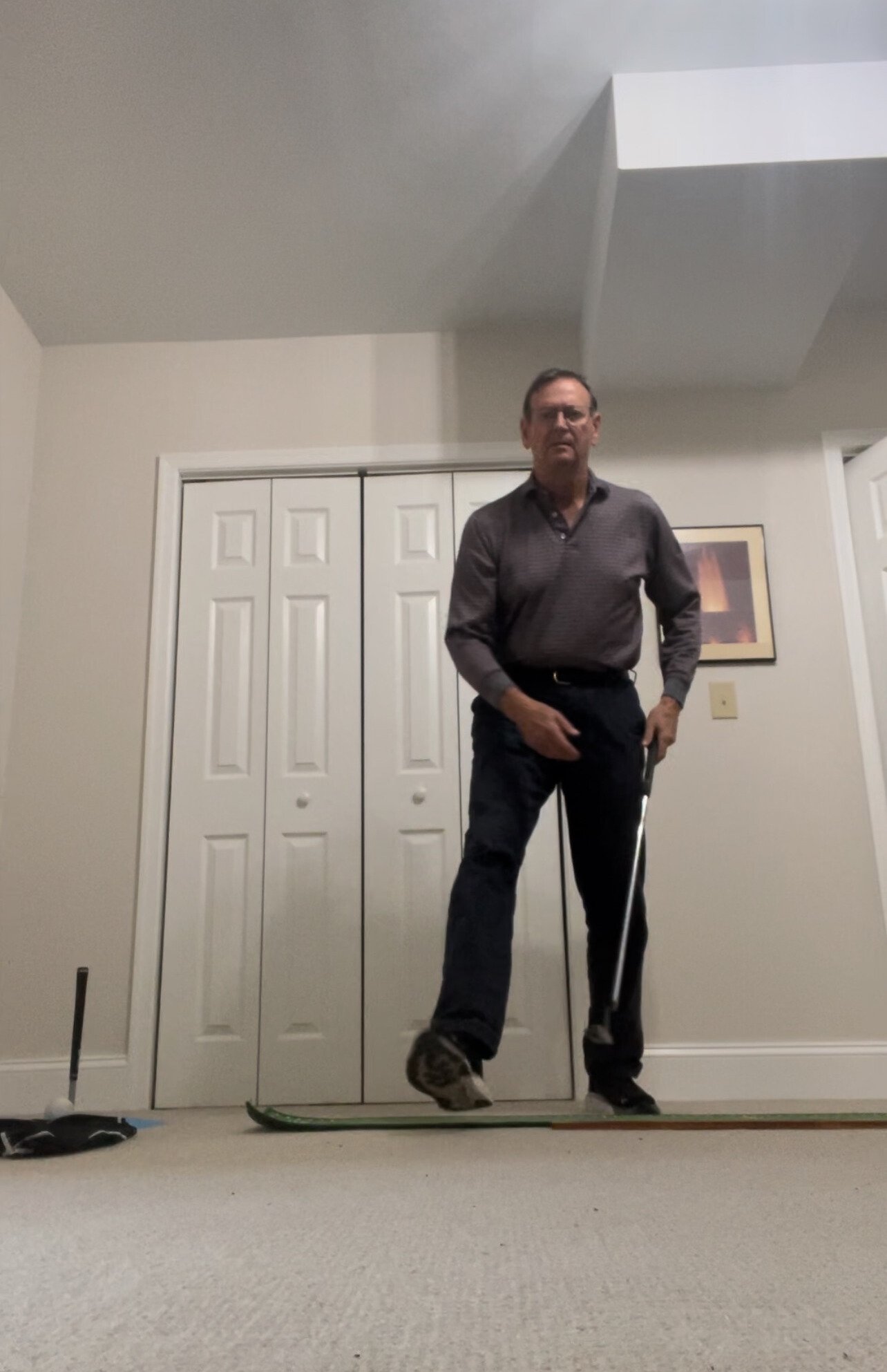Improving Distance Control in Putting
Putting requires determination. Before, during and after you stroke the putt.
This week, I am recommending one golf book and sharing some of my ideas on how to improve your “putting distance control.” Recently, I have worked on distance control tirelessly after three-putting more times than I care to remember. I took the Players’ Ability Test at age 65, where I had to shoot 158 over 36 holes to qualify to become a PGA Associate member (and later took and passed courses required by the PGA to become a Class A Member at the age of 67). On the day of my Players Ability Test near Princeton, New Jersey, it was 96 degrees, and I shot the exact qualifying score of 158 (80-78) on a course I had only played twice before. My putting during that one-day, 36-hole event included making two 50-footers, a 60-footer, and three putting seven times. On the last hole, I needed a birdie on the 18th (which was my 36th hole of the day). It was a 400-yard par 4, uphill into the wind, and I had a 50-footer for birdie. I made it and am now a Class A PGA member.
Recommended Book Reading:
The Four Foundations of Golf by Jon Sherman
This book was given to me as a gift by Woody Lashen, one of the best club fitters in the nation and co-owner of the newly renovated Pete’s Golf in Mineola, New York on Long Island. This book is not a swing instruction book. It is a book that I would title Golf Sense as it provides every golfer with a sensible, well-tested, and proven set of ideas on how to improve both your golf score, every aspect of your golf game, and your enjoyment of golf.
The book includes a practical set of approaches to improving how golfers practice, play the game recreationally and in tournaments, the mental side of the game, how to take lessons, and how best to work on your golf game in between lessons in order to improve. In addition, the book provides great ideas for golf-related products like Arccos or Shot Link shot tracking and analysis systems, simulator software and hardware, home putting devices, and other products that can help golfers. In addition, this book recommends several other great golf books to read, like James Sieckman’s Your Short Game Solution. Check out Jon Sherman’s website - www.practical-golf.com and sign up for his newsletter.
An Approach to Improving Distance Control in Putting
Recently, five years after passing my PAT distance control has again become a problem for me, especially on putts over 30 feet in length. Since I usually hit 11 or 12 greens a round, I have a lot of long birdie putts, and we have undulating greens at my home course, Lexington Golf and Country Club in Lexington, Virginia.
My goal now is 30 putts maximum on a round, so I am intensively working on my putting stroke, my green reading, and I will improve my distance control significantly over the next month. My philosophy is for serious golfers: never let an identifiable golf problem go for long because the longer you have the problem, the harder it is to fix. For every golf problem, there is a well-known remedy. The challenge is diagnosing the problem accurately. Over the years and even before the Players Ability Test, the trained eyes of my golf instructor and PGA mentor, Brad Worthington, PGA identified my “acceleration” problem in my putting stroke. Smoothness in one’s putting stroke is essential, and there are ways to observe and actually measure whether or not you are accelerating your putting stroke too quickly as you start your forward stroke.
Over the past several days, I have worked several hours a day and have made the following changes:
A new putting stance, bending my knees more
Having more of an Arc putting stroke rather than straight back and straight through on long putts
Gripping the putter lighter
Working on being smooth
Practicing with the intent of improving my distance control by doing drills that help me assess my skill level in this area
For more information on this topic, please read my new article on my website here.
If you are sight impaired, as I am seeing only out of my left eye, read this article on my website.
If you think you are letting a bad first putt contribute to hitting your next putt badly, read this article on my website.
If you find this newsletter and my articles on golf useful, check out my website at www.herbrubenstein.com. I can promise you the putting video at the bottom of my home page IS A FIRST TAKE. I think you will enjoy the video even with the real wind noise in the video. The article and the video will also help you enjoy putting more and more.
Bonus Epilogue
AND one time when I was driving a car on the Eastern Shore in Maryland near The Inn At Perry Cabin and its great, recently renovated golf course, I was on a two-lane road with virtually no traffic. I came up to two cars stopped in my lane, and in front of them on the opposing traffic lane, three cars were stopped. People were standing outside of their cars. I joined them to see what in the world was going on. I thought maybe there was a huge crack or something in the road.
A momma Duck and 9 of her Ducklings were slowly walking across the road. Lesson: Always stop what you are doing and let the momma Duck and her Ducklings take their sweet time to get to the other side of the road.
Now, as I practice putting, here is my question based on this picture: Do I have to stop putting, or can I move these cats out of the way? Send your answers to herb@herbrubenstein.com.


